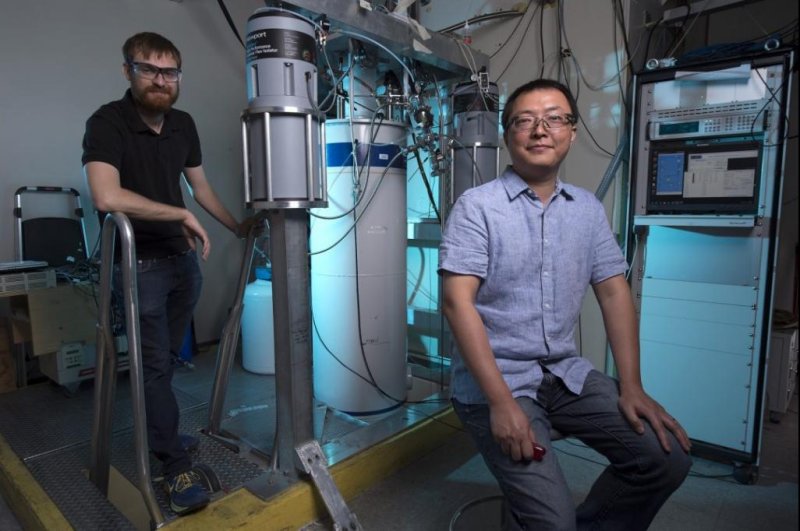To study the new 2D materials, researchers built the most powerful magnetic microscope in the world, the Sagnac interferometer. Photo by Steve Zylius/UCI
April 27 (UPI) -- Researchers in China and the United States have developed a new class of 2D quantum materials capable of conducting electricity at nearly the speed of light. The materials could be used to build the next generation of quantum computers.
The new materials feature data-carrying Dirac or Majorana fermions, particles without a charge and mass. The particles can travel at almost the speed of light.
"Finally, we can take exotic, high-end theories in physics and make something useful," Jing Xia, an association professor of physics and astronomy at the University of California, Irvine, said in a news release. "We're exploring the possibility of making topological quantum computers [currently theoretical] for the next 100 years."
The new materials -- detailed in three newly published scientific papers -- are microscopic. The research required a powerful microscope. To carry out their work, Xia and his colleagues built the most powerful magnetic microscope on the planet, the fiber-optic Sagnac interferometer microscope.
"This machine is the ideal measurement tool for these discoveries," said Alex Stern, a grad student at UCI. "It's the most accurate way to optically measure magnetism in a material."
Researchers used the microscope to observe chromium germanium telluride, a superthin atomic carbon film similar to graphene. The scientists observed the material at negative 387 degrees Fahrenheit.
Unlike graphene, CGT is both conductive and magnetic, making it an ideal material with which to build computer components.
Researchers also observed the interface between bismuth and nickel at minus 452 degrees Fahrenheit. At their precise point of contact, the interface becomes "an exotic superconductor that breaks time-reversal symmetry."
The materials developed by Xia and his research partners could be used to build the next generation of supercomputers and quantum computers.
"The issue now is to try to achieve this at normal temperatures," Xia said. The third study shows promise in overcoming that hurdle.















